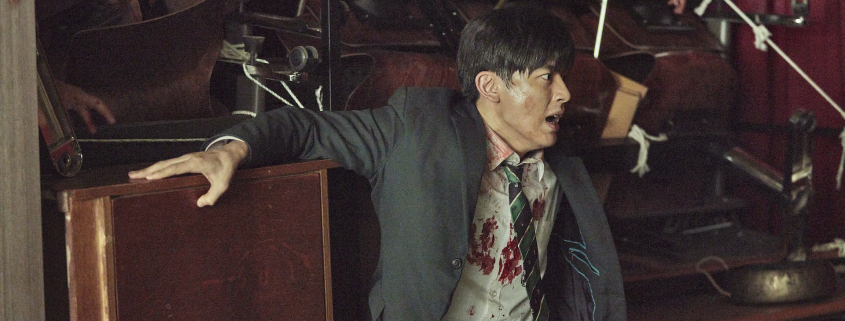Animated: With visual effects, zombies affect us more than we know

Zombies are thematically intriguing just as much as they are visually grotesque. Maybe that’s why films like “Train to Busan” and television shows such as “The Walking Dead” are so popular — when it comes to those living through the apocalypse, the urgency of survival against violent, flesh-eating monsters often outweighs individual morality.
During the beginning of the spring semester, I binge watched the hit South Korean Netflix television series “All of Us Are Dead.” Set in a South Korean high school, the series traces the beginning of a zombie virus outbreak and follows a group of students who must make sense of their surroundings to survive. Audience’s witness the demise of loved characters and their disintegration into unrecognizable monsters.
Visual effects are critical in capturing the disintegration, making the transition into a zombie all the more striking. Where the mere thought of a zombie apocalypse is terrifying, seeing these zombies come to “life” is even more terrifying because of the way the physical horror creates an emotional effect.
It only feels like a few seconds before a lovable character’s eyes become bloodshot, her nose starts bleeding, her bones crack and her joints twist. She’s no longer a best friend, but a monster.
All of that is to say, when both themes and visuals intersect, the narrative becomes incredibly powerful. In the YouTube video “All of Us Are Dead: Before & After VFX! (Unseen Behind The Scenes!),” The Film Bee compiles behind-the-scenes footage of the show and talks about how computer-generated imagery, or CGI, is minimally applied to certain scenes to enhance a sense of the setting.
In one scene, a whole CGI schoolyard was created and added through the use of a blue screen after production to “add more layers” to the school and show its expansiveness. CGI simultaneously provides the audience with a broad idea of the high school’s physical space while surveying the space’s limitations during fights with zombies.
When there are only a few physical means of escape, the concepts of sacrifice and friendship forcibly come to the surface. “All of Us Are Dead” fascinatingly depicts that all-consuming kind of confinement. While the tv series is a live-action adaptation of the original Webtoon and largely relies on practical effects significantly more so than digital ones, there’s no denying that images and the digital arts do have an overlooked presence in the show.
Whenever I’m thinking about the soul-crushing impact of South Korean zombies and their social messaging, I will inevitably think about another South Korean piece of zombie media: the 2016 animated film (and prequel to ‘Train to Busan”) “Seoul Station.” “Seoul Station” tells the story of a former sex worker named Hye-sun’s fight to find safety as Seoul faces a zombie apocalypse.
While “All of Us Are Dead” relies on physical choreography to coordinate and mimic zombie movements, the zombies of “Seoul Station” appear to move jerkily. Even as they seemingly move without agency, these zombies have their own type of “choreography.”
What makes “All of Us Are Dead” and “Seoul Station” different is that one is live-action and the other is animated. What both have in common, however, is the ability to stylize zombies to maximize their impact. For both, blood splatters and bulging veins are part of the standard image, often evoking fear for many who are witnessing the transformation of a loved one.
Some slight visual nuances distinguish the two. In “Seoul Station,” for example, pupils evidently shrink in size and lose their personality, furthering the idea that the person who the zombie was before is gone. In “All of Us Are Dead,” the eyes are primarily rimmed with blood to emphasize one’s “zombie” status.
Yet, in both, there’s a visual focus on the sheer size of those who have become undead and their threat to those still alive. It’s a stunning way of showing the forces up against our protagonists and underscores our need to root for them.
When it comes to evaluating these two pieces of zombie media, it’s worth thinking about how visuals have shaped our conception of zombies. There are definite reminders of what “monstrosity” is in the grotesque characteristics. Still, all revolve around the loss of humanity: the idea that someone is no longer complex and human.
In the visual effects and animation of the setting and the characters, all the storytellers involved in “All of Us Are Dead” and “Seoul Station” have shown audiences just how terrifying the prospect of an apocalypse is. By creating these visceral images that leave lasting imprints on the audience’s mind, we’re told to think about how we can survive — and what survives us.
Valerie Wu is a junior writing about animation and digital arts from a contemporary perspective. Her column “Animated” runs every other Friday.

